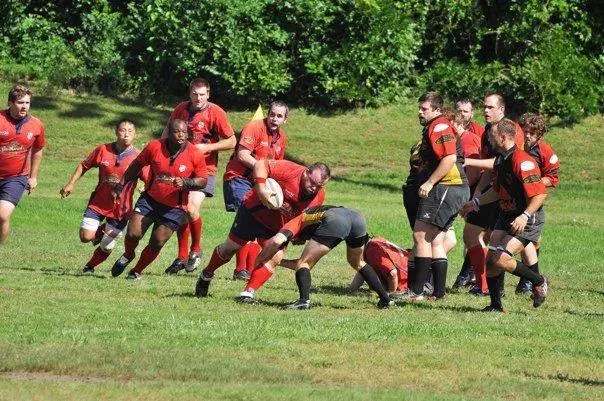
Sep 23, 2013 • 5 min read
Injuries Rise For Overweight Youth Athletes
Posted in:
By Dan Peterson, TeamSnap’s Guest Writer about sports science and skill development for young athletes.
With the arrival of the Fall sports season, many high school and college athletes are finding out if their off-season nutrition and workout program was effective, adequate or non-existent. Those that spent the summer at fast food restaurants instead of the gym are struggling with the extra pounds while they suffer through the August heat of “two a day” practices. While we don’t typically think of athletes struggling with weight issues, they face the same battle as the general public in making the right choices and understanding their body’s unique metabolism.

Recent research also shows that keeping an athlete’s weight under control can reduce injuries. Oregon State nutritionist Melinda Manore recommends a “low energy dense” diet for athletes and some tips on managing their nutrition with their training.
In what may come as a surprise, an Ohio State study found that over one third of the 7 million U.S. high school athletes can be classified as overweight or obese using body mass index criteria. Ellen Yard and Dawn Comstock from the Centre for Injury Research and Policy also found that controlling a young athlete’s weight is not only helpful to their performance but also can keep them on the field and out of the training room. By studying a massive database of athletic injuries covering 100 high schools across the U.S. from 2005-2008, they found that one third of the 1.4 million injuries suffered annually were to overweight or obese athletes. In football, a whopping 54% of injured players were also overweight.
In fact, a 2010 study concluded that overweight and obese teens are more than twice as likely to be injured in sports and other physical activities compared with normal weight athletes.
“Depending on the sport, athletes sometimes want to either lose weight without losing lean tissue, or gain weight, mostly lean tissue,” said Melinda Manore, professor of nutrition in the College of Public Health and Human Sciences at Oregon State University. “This is very difficult to do if you restrict caloric intake too dramatically or try to lose the weight too fast. Doing that also means they don’t have the energy to exercise, or they feel tired and put themselves at risk of injury.”
So, what should a young athlete’s optimal weight be? Manore knows that each person is different as are the demands of their sport. Finding the right energy balance is the key to stable body weight. In a paper published this summer as part of the Nestle Nutritional Institution Workshop Series, she included recommendations for athletes in finding the right nutrition plan based on their “energy balance.”

This image shows some of the many variables that go into finding that balance, including genetics, hormones, overall health and the athlete’s emotions and environment.
Manore outlined these guidelines to help determine the right body size:
- Weight that minimizes health risks and promotes good eating
- Weight that takes into consideration genetic makeup and family history
- Weight that is appropriate for age and level of physical development, including normal reproductive function in women
- Weight that can be maintained without constant dieting and restraining food intake
Once the proper weight is determined, Manore recommends a diet that is low-energy dense, also known as high-fiber, high-water but low fat foods. This includes a healthy combination of fruits, vegetables, whole grains, lean meat, fish and low-fat dairy.
Other parts of her plan are relevant not only to athletes but to everyone.
- Eat breakfast but skip the processed cereals.
- Get plenty of protein. Some athletes may need up to 30 percent of their calories from protein but need to especially refuel after a workout.
- Keep up the workouts year-round to maintain a consistent weight. Don’t wait for the last month before the season to cut pounds.
- Avoid fad diets and severe weight-cutting plans. Trying to lose a lot of pounds in a hurry can cause changes to your metabolism that will be counter-productive.
Tracking all of this nutritional data requires not just a calorie counter but a complete athlete monitoring system that combines the other parts of an athlete’s life, including physical training, mood, sleep, and competition data. Involving coaches and training specialists by giving them access to the data will also help the athlete stay on the right course, making the preseason more productive and less injury prone.
Daniel Peterson is an author and consultant specializing at the intersection of neuroscience and sports performance. He is the co-founder and director of 80 Percent Mental Consulting, along with Dr. Leonard Zaichkowsky, world-renowned sports performance psychologist and former professor at Boston University. Their new book, The Playmaker’s Advantage, published by Jeter Publishing/Simon & Schuster, is available wherever books are sold.
